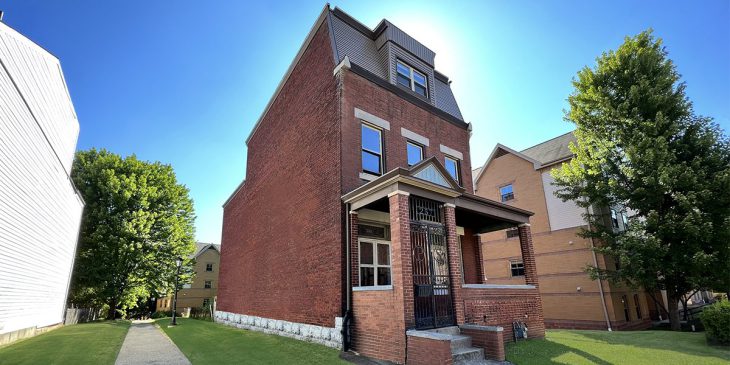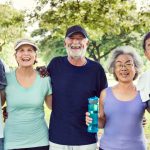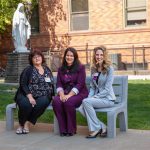More people could soon be aging safely in their own homes, thanks to a federal grant awarded to the University of Pittsburgh to help reduce environmental hazards for vulnerable seniors.
Pitt is one of seven institutions to receive a portion of a $5.7 million research grant from the U.S. Department of Housing and Urban Development, or HUD. Pitt’s Schools of Health and Rehabilitation Sciences (SHRS), Public Health and Engineering, and community partners Women for a Healthy Environment (WHE) and the Allegheny County Area Agency on Aging (AAA) received a $918,709 grant to develop assessment tools and interventions to make homes safer for seniors, people with disabilities and other vulnerable populations.
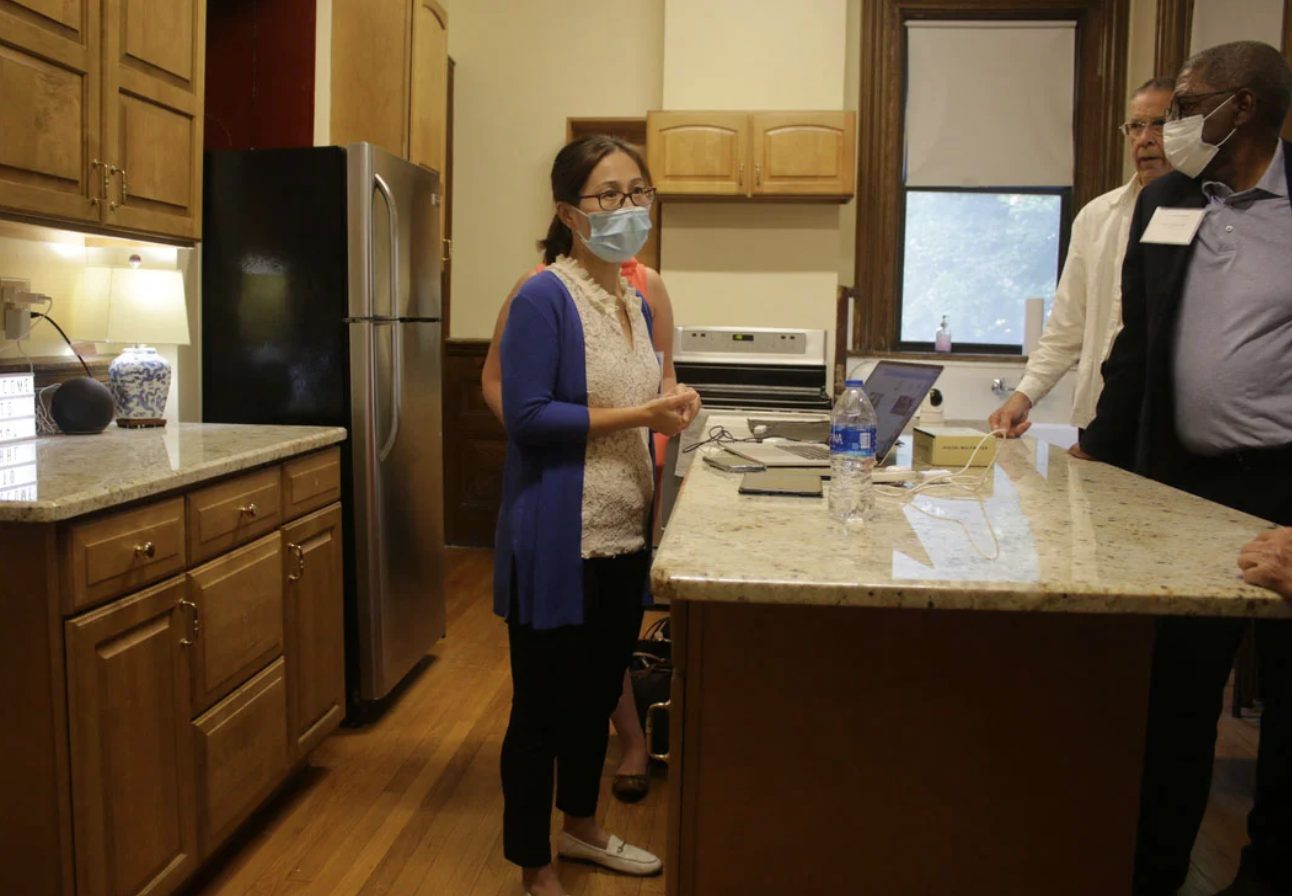
Dr. Dan Ding demonstrates smart home technology in the kitchen of the Healthy Home Lab
“We are excited to work with HUD and two terrific community partners to improve housing conditions for better health,” said co-principal investigator Dr. Dan Ding, associate professor at SHRS. “Pitt recently established the Healthy Home Laboratory, a community laboratory based in a 105-year-old Pittsburgh home. This will be the perfect testbed for the HUD project.”
Through HUD’s grant, Pitt’s multi-disciplinary team will build a new residential environmental hazards assessment module to be added to existing home health assessments.
“The current tools used in Medicare and Medicaid Home and Community Based Services often fail to assess the ‘health’ of the home itself,” said Ding.
According to Dr. Sarah Haig, co-investigator and assistant professor in Pitt’s Swanson School of Engineering’s Department of Civil and Environmental Engineering, indoor air quality and the presence of mold are also important health considerations.
“Mold in the home may pose a major health concern, and accurately quantifying and assessing mold risk can be a complex, expensive and time-consuming task. Our goal is to develop a simpler and less expensive mold assessment method that can provide near-real-time risk assessment,” said Haig.

Dr. Steven Albert
“HUD notes that a ‘home is a determinant of health.’ This is especially true for older adults and people with chronic conditions and disabilities,” said co-principal investigator Dr. Steven M. Albert, professor and Hallen Chair, Department of Behavioral and Community Health Sciences, Pitt’s School of Public Health. “Some home environments support health while others cause excess morbidity. The highly vulnerable populations receiving these services face substantial risk from unmeasured home environment hazards that may interact with their health conditions.”
Demand for services in the home continue to increase. In 2021, over 160,000 Pennsylvanians with physical and age-associated disabilities received in-home services through Pennsylvania OPTIONS and the new Medicaid Community Health Choices program, including many residents of Allegheny County.
Dr. Jon Pearlman, chair of the Department of Rehabilitation Science and Technology in SHRS, said that Pitt’s Healthy Home Lab will be the key research site.
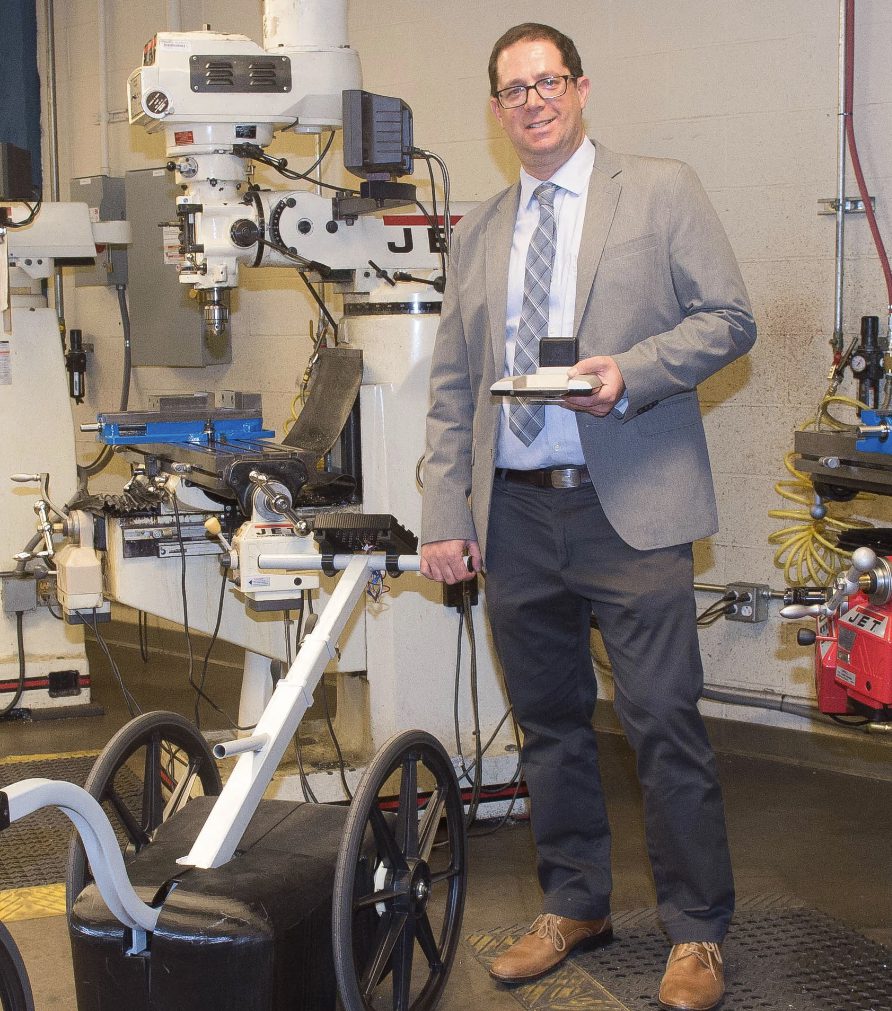
Dr. Jon Pearlman, technical director of the Healthy Home Laboratory, and chair, Dept. of Rehabilitation Science and Technology, SHRS
Pearlman, who will also serve as the technical director of the Healthy Home Lab, explained that the lab will be used to develop real-world simulations of environmental hazards, including low temperatures, high humidity and poor indoor air quality. Researchers will use these simulations to develop an assessment tool that will be piloted in the community. The team will test the usability of the tool with AAA and WHE home health assessors and prepare training materials with these partner organizations.
By 2050, the U.S. population over 65 will almost double to reach 83.7 million. The majority of seniors and people with disabilities prefer to remain in their homes as they age. However, according to the U.S. Census Bureau, only about 10% of homes are “aging-ready.”
“HUD is a leader in addressing the health aspects of home environments and has made major gains in identifying and remediating conditions, such as lead and asbestos, that are linked to significant health risks,” Pearlman said. “One of the important aspects of partnering with HUD is that the agency shares our interest in developing near-term practical solutions and then supporting their implementation through community partners. This aligns perfectly with the goals of our Healthy Home Lab to develop scalable solutions to make houses safer and more age friendly.



